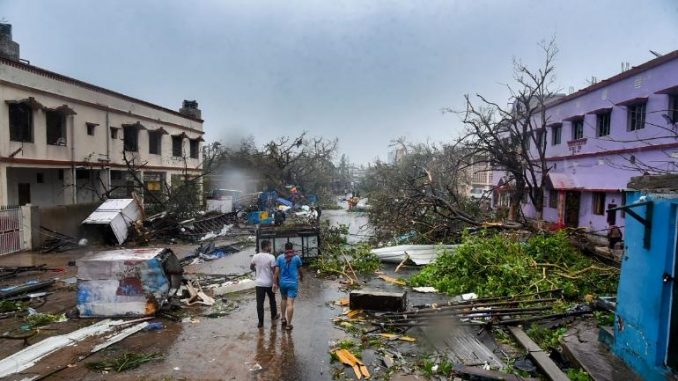
Context : Floods and droughts have become most frequent in the recent years.
Monsoon: A Relief with a Disaster
- According to Indian Meteorological Department, the monsoon has been raining in its plentitude for more than two weeks consecutively. An abundant monsoon is typically a good sign for the economy as agriculture constitutes 15 percent of India’s economy.
- The northern and eastern states of India typically receive higher rainfall than the southern and western part of the country. Consider the sparse amount of rainfall in the pre-monsoon phase; a bountiful monsoon is a relief for the drought-ridden areas.
- At the same time, many states such as Kerala, Assam, and Karnataka are facing devastation owing to floods at the time when last year’s floods in Kerala and drought in Chennai are still fresh in our memory.
- This underscores how the occurrence of floods and droughts has become very frequent in recent years. It is turning into a cycle of mass destruction covering more and more states in its ambit every year.
Understanding the extremes:
- India receives a variety of rainfall patterns in different parts of the country. Thus it is not surprising to see one part of the country is facing the destruction of floods while the other part stays drought-ridden.
- Drought is often caused by delayed onset of monsoon or early withdrawal of the monsoon. However, the diminishing ground water level as increased the frequency of the disaster.
- Since the monsoon water gets converted into rivers and lakes, it is the basic underlying water resource. Monsoon accounts for 96% of the total water sources. The other 4% is glacial water.
- We receive this water for roughly two months a year whereas water is a necessity of life for all 12 months of a year. The rainwater as a water resource is not properly managed.
- The deforestation is the major factor for the fact that the catchment area is gradually being reduced in size. More and more rainwater is running off instead of percolating into the soil and contributing to the groundwater.
- The low groundwater level leads to drought on the one hand whereas the run-off water brings flooding on the other.
- The imminent cause of the flooding is the incapacity of river banks to hold water. This is further catalyzed by the silting and erosion of river beds.
- Urbanization has been achieved at the expense of natural water bodies. It is a worldwide phenomenon. The cities like Chennai, Bengaluru, and Hyderabad in India are habituated by filling dozens of small lakes and ponds.
How to stop the cataclysmic cycle?
- The replenishment of groundwater is the most fundamental requirement towards dealing with the larger issues of droughts and floods. It demands immediate measures.
- Trees are known to have good water holding capacity. The catchment area should be rich with forests. It allows the water to trickle down into the soil which replenishes groundwater and also the minimal amount of run-off water will also prevent floods.
- Agro-forestry should be promoted and incentivized by the government. It is not only ecologically beneficial but also can boost a farmer’s income by 8 to 12 times.
- Urbanization should be carefully planned. The state governments should be held accountable for uncontrolled urban development. National Disaster Management Authority guidelines should be strictly implemented.
- In April 2002, the National Water Policy was formulated by the National Water Council. It provides for the provision of flood control, groundwater, and irrigation. The provisions of the National Water Policy should be carefully implemented in every state.
- From scientific hydrology to traditional methods of water conservation, innovation in the field of water management is long overdue. Money should be pumped into ecological researches and mass scale debates need to be conducted on possible solutions such as pan India inter-linkage of river bodies and lakes.
Conclusion:
India is set to become the most populous nation in the world. With the growing population, the process of deforestation and urbanization is bound to take the further leap. The problem of water resources is only going to be accentuated. We, as a country, cannot afford to lose hundreds of lives and billions of dollars every year to avoidable calamities.
The measures to fight floods and droughts should not be restricted to early warning and rehabilitation process. Embankments, walls and dams and reservoirs are the short term solutions but the calamity at its heart will remain unaddressed until the violations of natural orders are undone.

Leave a Reply
You must be logged in to post a comment.